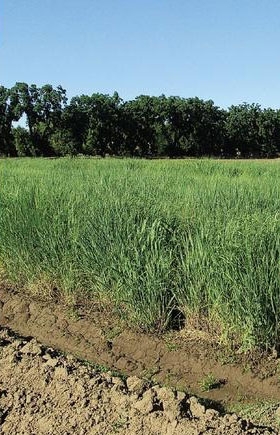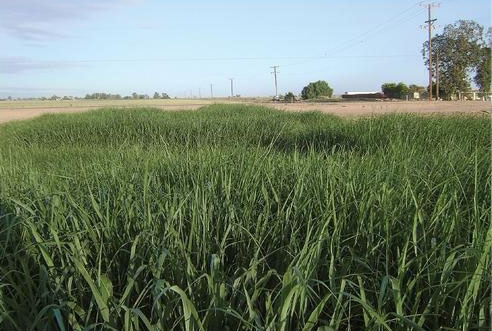Switchgrass could become high-yielding biofuel crop
California must continually increase its use of renewable fuels to meet mandated reductions in greenhouse gas emissions (GHG). The state's historic Global Warming Solutions Act of 2006 (AB32) requires that alternative fuels displace 6 percent of gasoline and diesel use now, and 9 percent by 2012. The number goes up to 11 percent in 2017 and 26 percent in 2022.
California has been meeting these goals by importing millions of gallons of ethanol: 80 percent of the supply is corn ethanol from the Midwest, 12 percent is sugarcane ethanol from Brazil, and the rest is ethanol from corn grown here. By 2012, demand for ethanol fuel will rise to 1.62 billion gallons per year. If California does not increase its production of corn for ethanol, it will need to import 95 percent of that amount.

In the search for a better alternative, scientists have been investigating conversion of cellulose to ethanol. Technical challenges remain, but cellulose offers a potentially abundant feedstock for biofuels.
One of the plants seen as a possible dedicated biofuel crop in the United States is switchgrass. It is about 40 percent cellulose and grows widely in the Midwest and the South. However, it is not native to California and has not been produced here.
Recent studies by UC Davis scientists are the first ever to report tests of different switchgrass ecotypes in California, - and are published in the current California Agriculture journal.
Scientists evaluated the productivity of the two main ecotypes of switchgrass, lowland and upland, under irrigated conditions across four diverse California ecozones — from Tulelake in the cool north to warm Imperial Valley in the south.
”It is important to know how much biomass can be produced in the state before deciding to pursue cellulosic ethanol," says UC Davis plant scientist Gabriel Pedroso. "California has very diverse climatic regions, which affect the adaptability and productivity of switchgrass.”
Because it is a deep-rooted perennial grass, switchgrass promotes soil conservation. It stores carbon in its root system, and makes efficient use of water by virtue of its C4 photorespiration.
Switchgrass requires an establishment year.
"In the second year of production, the lowland varieties grown in the warm San Joaquín and Imperial valleys yielded up to 17 tons per acre of biomass, roughly double the biomass yields of California rice or maize," Pedroso said.

Because it can be used both as forage and as a biofuel crop, switchgrass may be well suited to California, a state with a large livestock industry and higher ethanol consumption than any other.
While the field trial results are promising, commercial, large-scale conversion processes for cellulose to sugars and fuels are just beginning to be demonstrated.
Cellulose is a complex matrix of smaller sugar molecules and fibrous material in plant cell walls. It is the principal structural component of all plant material, including residues and organic materials in municipal solid waste. If it were possible to efficiently break it down into simple sugars, if would become a productive source of ethanol, and would significantly reduce GHG.